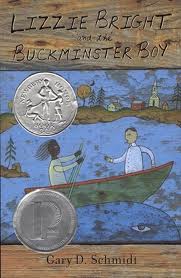Novel Diagnosis Series
Introduction
Characters
Dialogue
Scenes
Voice
VoiceRevisited
Plot
Please read the Novel Diagnosis–Introduction about competencies.
Long stories, like novels, are usually written in scenes. A scene is a contained unit of action that has a beginning, middle and end and usually builds toward a mini-climax. This implies that a character has a goal they are striving for and someone/something is trying to keep them from reaching that goal. A scene can be contained in a single, short paragraph, or it can run several pages. Scenes often contain action, dialogue, narrative and interior thoughts. Yes, a scene could be complete with only dialogue. But usually, there’s a combination of the four elements.
Self-Diagnosis–Scenes
Choose a chapter of your mss.
Now go through the chapter and put boxes around your scenes. Allowing for variations of length and complexity, there should be several scenes. They may or may not be connected with narrative between them.
STOP. Really. Go and draw boxes. Don’t assume.
Example of Scenes

In the Newbery Honor book, Lizzie Bright and Buckminster’s Boy, by Gary D. Schmidt, Chapter 3 has these scenes:
Turner’s father, the minister, punishes him for several misdeeds. (2 pages)
Turner suffers in his room from the summer heat. (Half page)
Turner survives supper without a misstep. (One chapter)
Turner watches the sunset and almost likes Maine. (Half page)
Turner seeks a place where he “can breathe”; he goes to the seashore. (2 pages)
Turner meets Lizzie Bright, who teaches him how to bat Maine-style. (6 pages)
At supper, Turner is lectured by his father, until his mother steps in and stops it. (2 pages)
Turner heads to the hay meadow to play baseball, but a rain storm stops the game. (1 page)
Several short scenes build up to the longest scene in which Turner meets Lizzie Bright, a black girl, and they become instant friends, something that will cause trouble throughout the rest of the story. Notice that Turner is at the center of each scene and each scene contains conflict, both big and small. For example, when Turner meets Lizzie Bright, he is throwing stones. She calls to him and in his surprise, his last stone is thrown overhead and comes down and hits his nose. It bleeds and a bloody shirt will get him in more trouble with the minister. In his pain, Turner refuses to answer Lizzie Bright’s questions, so she thinks he is an idiot. Besides the overall problem of not liking Maine and befriending the wrong person, Turner has smaller conflicts within the scene itself.
Self-Evaluation
Are you using scenes? Were you able to draw boxes around distinct sections?
Does each scene has a narrative arc that builds toward a climax?
Does each scene include the main character? If there are several points-of-view in the story, does each scene include the POV character?
Does the main character (or POV character) encounter conflict?
Do most scenes end with the main character in worse shape than before?
Rate Yourself on Characterization: (see Introduction for explanation)
Unconsciously Incompetent
Consciously Incompetent
Consciously Competent
Unconsciously Competent
Suggestions: Repeat the evaluation for a different chapter. Make sure each chapter is built on scenes that build toward something and that the main character is increasingly put into worse situations.
For further study: Read  The Westing Game by Ellen Raskin. In this classic Newbery winner, Raskin characterizes multiple characters with ease.
The Westing Game by Ellen Raskin. In this classic Newbery winner, Raskin characterizes multiple characters with ease.
Tomorrow: Novel Diagnosis–Dialogue